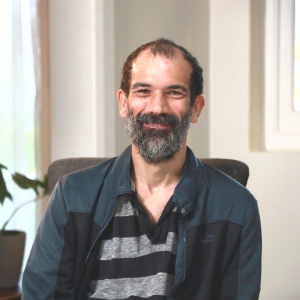
Jason Forbes
Disability Advocate
The way we interpret and perceive the world is often informed from our experience. Most of us do not experience disability on a daily basis. That is, most of us do not have a biological or mental condition that results in social disadvantage. So, the world around us is often interpreted and perceived through an ableist framework. The Oxford English Dictionary defines ableism as, “Discrimination in favour of able-bodied people; prejudice against or disregard of the needs of disabled people.” While there may not be intended prejudice against people with disabilities, prejudice can occur simply by giving preference to able-bodied people. So, for example, not providing a ramp may not intended to be prejudice against people with disabilities, it nonetheless demonstrates a preference for people who don’t have mobility issues.
Most people experience able-bodiment as a norm, and do not feel a need to interpret and perceive the world from any other perspective. This is also true for the interpretation of Scripture. Because the able-bodied perspective is so dominant, Scripture tends to be interpreted accordingly. Such interpretations of Scripture go unchallenged and become acceptable biblical teaching. This is what I mean by “ableist teachings in the church”. Here, I want to address points of teaching that are readily accepted as biblical, but nonetheless can create stumbling blocks for people with disabilities. These unnecessary stumbling blocks can prevent people from coming to faith or create on going issues for those who have faith.
In this series, three ableist perspectives will be scrutinised, and a more nuanced perspective will be presented. Part 1 considers disability in relation to sin and the Fall, part 2 considers disability in relation to the eschatological state, and part 3 considers disability in relation to virtue and character.
Part 1 – Disability in Relation to Sin and the Fall
Disability is often considered as a direct result of the Fall into sin. Such considerations are strongly stated by scholars such as George C. Hammond who writes,
“… all disability is a result of the Fall, a contradiction of the “very good” creation. The fact that Jesus in proclaiming the kingdom of God brought physical as well as spiritual healing is indicative that reversal of the effects of the curse is a feature of the kingdom.”
There are passages that seem to suggest that disability is a result of sin. Disabilities are included in a list of punishments should Israel be disobedient (Deut 18:28). The men who were attempting to assault Lot were struck blind (Gen 19:22). King Jeroboam’s hand withered when he attempted to seize the man of God (1 Ki 13:1–4). It is said that worthless shepherds (referring to Israel’s leaders) will have their arms and eye struck (Zec 11:17). Nebuchadnezzar was struck with a humiliating condition for persisting in sin (Dan 4:19–33). Zechariah was made mute for his lack of faith (Luke 1:8–22, 62–64). Saul was struck blind for his persecution of the church (Acts 8:3–9).
However, not all disability is to be understood in negative terms. Jacob with his limp is honoured by future Israelites because he wrestled with a divine adversary (Gen 32:22–32). The book of Judges also presents Israel’s champions as being atypical warriors. In particular, Samson, who during his greatest act of deliverance for Israel, was both blind and captive (16:23–31). During the period of Israel’s monarchy, Mephibosheth, despite being lame in both feet, is presented as having potentially conspired against David (2 Sam 16:1–4; cf. 19:24–30). Disability is presented as part of God’s purposes (Exo 4:11). Jesus, at the very least, denies an automatic connection between disability and sin (John 9:3). This is powerfully illustrated in the healing of the paralytic. Jesus declares that his sins have been forgiven not when he is healed, but when he is still paralysed (Matt 9:1–8 [// Mark 2:1–11; Luke 5:17–26]).
Therefore, while disability may appear as part of a moralising narrative, it isn’t necessarily so. Biblical characters with disability are presented as honoured, empowered, part of God’s divine purposes, and having a disability apart from sin. Assertions like those of Hammond are not true in every instance.
Perhaps the most positive presentation can be found in Malachi 4:6–7.
“In that day, declares the Lord, I will assemble the lame and gather those who have been driven away and those whom I have afflicted; and the lame I will make the remnant, and those who were cast off, a strong nation; and the Lord will reign over them in Mount Zion from this time forth and forevermore.”
In as much as God will judge and reject his people (3:9–10), his salvation is so expansive that it will take in those who have been previously rejected – the lame. It is as though the category of disability exists in Micah in order to demonstrate the nature of God’s salvation.
Therefore, in relating disability to sin and the Fall, care must be taken not to make those with disability more of a victim than those without a disability. Recognition ought to be given to the fact that the primary effects of the Fall disrupt the individual’s relationships with God, other people, and creation. People with disabilities may experience these disruptions more acutely, however, this is more due to the fallen state of others rather than their own.
